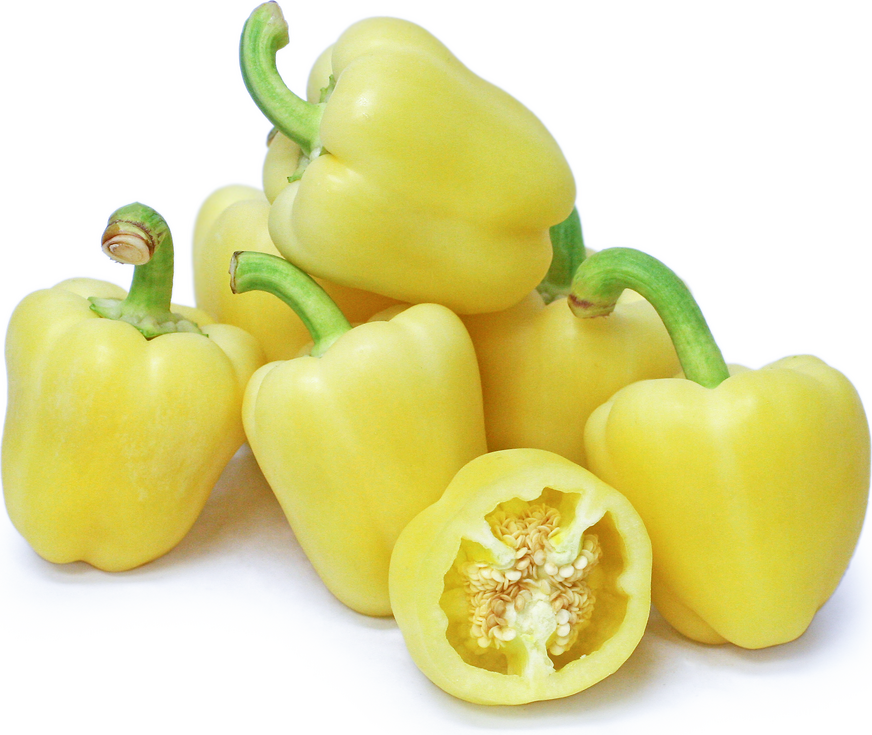


White Holland Bell Peppers
Estimated Inventory, 10 lbs : 0
Description/Taste
White Holland bell peppers are medium to large in size, averaging seven centimeters in length and five centimeters in diameter, and are rounded, square, and globular in shape with 3-4 lobes and a thick green stem. The smooth skin is firm, glossy, and pale white to ivory, almost appearing translucent when young, transforming to a faint yellow when mature. Underneath the skin, the pale-yellow flesh is thick, juicy, crisp, and succulent, with a hollow cavity that contains very small, flat cream-colored seeds and a thin membrane. White Holland bell peppers are crunchy with a mild, sweet flavor.
Seasons/Availability
White Holland bell peppers are available in the spring through summer.
Current Facts
White Holland bell peppers, botanically classified as Capsicum annuum, are a rare variety that are members of the Solanaceae family. Grown as an annual, White Holland bell peppers mature in approximately eighty-five days and there are many different varieties of white bell peppers. While this variety is difficult to find in the commercial marketplace, White Holland bell peppers are favored by home gardeners and local farms for their ease of growth, high yields, unusual coloring, and sweet flavor.
Nutritional Value
White Holland bell peppers are an excellent source of vitamin C and also contain some vitamin A, vitamin K, vitamin B6, manganese, potassium, copper, and folate.
Applications
White Holland bell peppers are best suited for both raw and cooked applications such as grilling, roasting, sautéing, and baking. The peppers can be consumed fresh and are often sliced for vegetable plates, tossed into a salad, layered on sandwiches, or chopped into grain bowls and salsa. White Holland bell peppers can also be stir-fried, grilled on skewers, stuffed with meats and cheeses, cooked down and pureed into a sauce, or added to soups, stews, and casseroles. White Holland bell peppers pair well with tomatoes, onions, garlic, eggplant, mushrooms, cauliflower, ginger, cumin, oregano, cilantro, dill, oregano, thyme, basil, poultry, pork, beef, fish, tofu, seafood, white beans, black beans, rice, quinoa, and faro. The peppers will keep up to one week when stored unwashed in the crisper drawer of the refrigerator.
Ethnic/Cultural Info
White Holland bell peppers have historically been grown in the Netherlands, where the practice of cultivating the peppers in hothouses under controlled temperature and light was pioneered, allowing for consistent fruit size, dense flesh, and higher yields. In Holland, there is even an advanced water system that is run by computers and uses water droplets with added nutrients to monitor the growth of the fruits and reduce waste.
Geography/History
Bell peppers are indigenous to tropical America and have been growing since ancient times. Portuguese and Spanish explorers are credited with spreading sweet peppers from the New World to the Old World, and the White Holland bell pepper was created in Holland in the early 1980s. Today White Holland bell peppers are found at local farmers markets and specialty grocers in Europe, Asia, South America, and North America.




